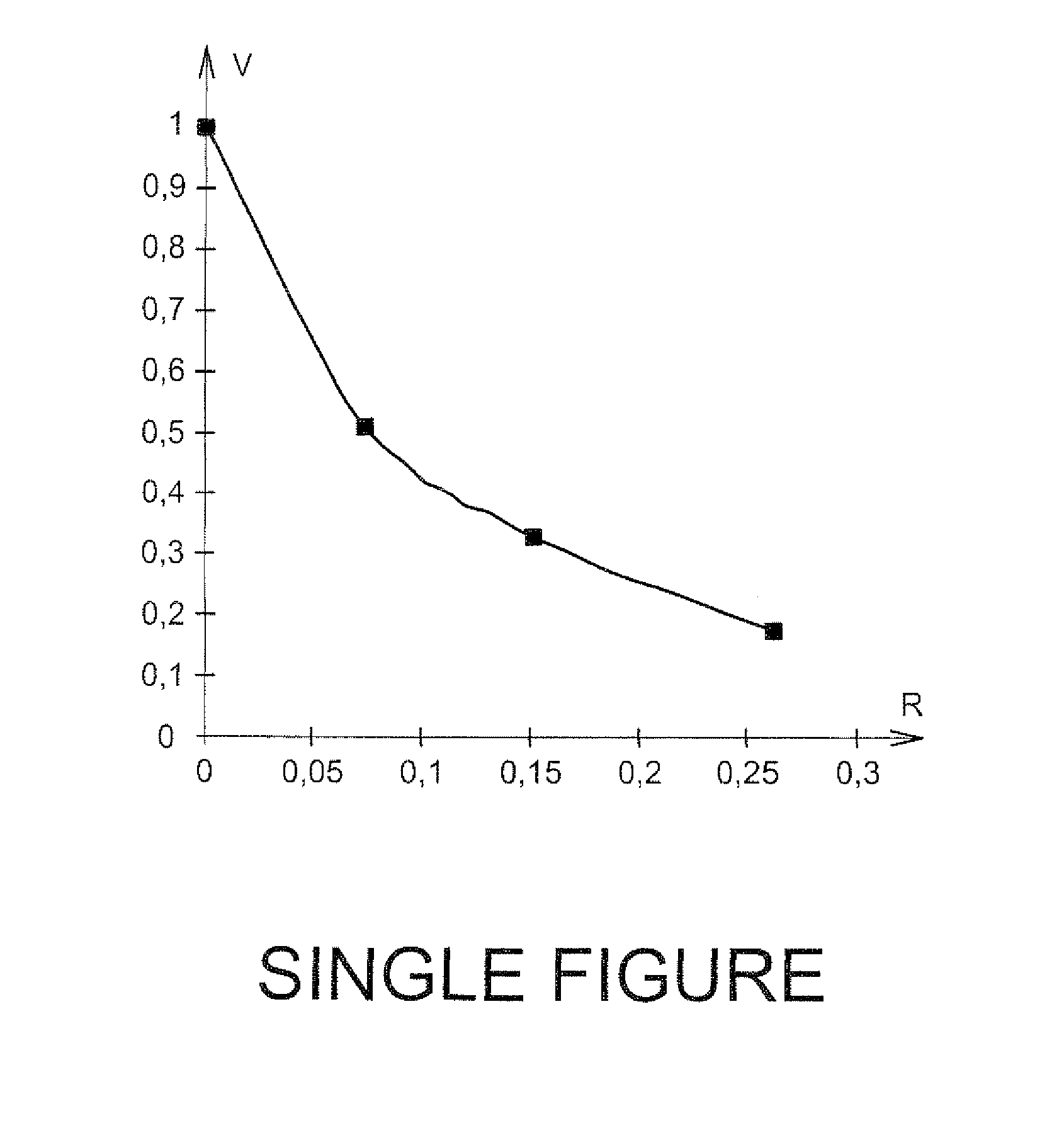Use of certain chemical elements for inhibiting the formation of precipitates containing zirconium molybdate in an aqueous solution containing the element molybdenum and the element zirconium
a technology of zirconium molybdate and chemical elements, which is applied in the direction of nuclear elements, dissolving, nuclear engineering, etc., can solve the problems of hammering the proper operation of the apparatus, irreversible damage to the element, and consequent effects of solutions
- Summary
- Abstract
- Description
- Claims
- Application Information
AI Technical Summary
Benefits of technology
Problems solved by technology
Method used
Image
Examples
example 1
[0041]This example illustrates the use of plutonium in its degree of oxidation (IV) for inhibiting the formation of zirconium molybdate in a nitric solution comprising the element molybdenum and the element zirconium.
[0042]To do this, two 3N nitric acid solutions were prepared under cold conditions:[0043]a first solution comprising molybdenum and zirconium at 0.7 g·L−1;[0044]a second solution comprising, in addition to molybdenum and zirconium in an amount of 0.7 g·L−1, plutonium in its degree of oxidation (IV) in an amount of 1 g·L−1.
[0045]Both of these solutions are heated in parallel and held at 87° C. The first solution precipitates after about one hour. The second solution does not precipitate but at the end of a heating period of at least 6 hours.
example 2
[0046]This example illustrates the use of tellurium Te in its degree of oxidation (VI) for inhibiting the formation of zirconium molybdate in a nitric solution comprising the element molybdenum and the element zirconium.
[0047]To do this, a 3N nitric acid solution is prepared, comprising 0.8 g·L−1 of molybdenum and 0.8 g·L−1 of zirconium, i.e. concentrations close to those which may be encountered during the dissolution of irradiated fuels.
[0048]To this solution, tellurium in its degree of oxidation (VI) is introduced in the form of telluric acid and the relative crystalline growth rate (V) of zirconium molybdate is measured versus the Te (VI) concentration (in g·L−1) in a circular reactor comprising the following elements:[0049]quartz crystal microscales located on the side portion of the reactor;[0050]a stirring device with which it is possible to guarantee growth conditions not limited by molecular diffusion;[0051]an inlet through which the solution may be introduced.
[0052]The qua...
example 3
[0054]This example illustrates the use of antimony (Sb) for delaying the nucleation instant and the growth kinetics of zirconium molybdates in a nitric solution containing the element molybdenum and the element zirconium.
[0055]To do this, a solution of nitric acid comprising about 2 g·L−1 of molybdenum and about 2 g·L−1 of zirconium is prepared.
[0056]To this solution, antimony with a mixed degree of oxidation between (V) and (VI) is added in the form of a solution with a high nitric concentration and a high antimony concentration, in order to form a final solution comprising a nitric acidity of 3 N with 2 g·L−1 of molybdenum, 2 g·L−1 of zirconium and 0.2 g·L−1 of antimony.
[0057]The solution is brought to a temperature of 80° C., and the time for the first crystals to appear is observed.
[0058]In the presence of antimony, the solution begins to precipitate and becomes cloudy after 180 minutes, instead of 20 minutes for an identical solution but without any antimony.
[0059]Microscopic o...
PUM
| Property | Measurement | Unit |
|---|---|---|
| boiling temperature | aaaaa | aaaaa |
| concentration | aaaaa | aaaaa |
| concentration | aaaaa | aaaaa |
Abstract
Description
Claims
Application Information
 Login to View More
Login to View More - R&D
- Intellectual Property
- Life Sciences
- Materials
- Tech Scout
- Unparalleled Data Quality
- Higher Quality Content
- 60% Fewer Hallucinations
Browse by: Latest US Patents, China's latest patents, Technical Efficacy Thesaurus, Application Domain, Technology Topic, Popular Technical Reports.
© 2025 PatSnap. All rights reserved.Legal|Privacy policy|Modern Slavery Act Transparency Statement|Sitemap|About US| Contact US: help@patsnap.com

